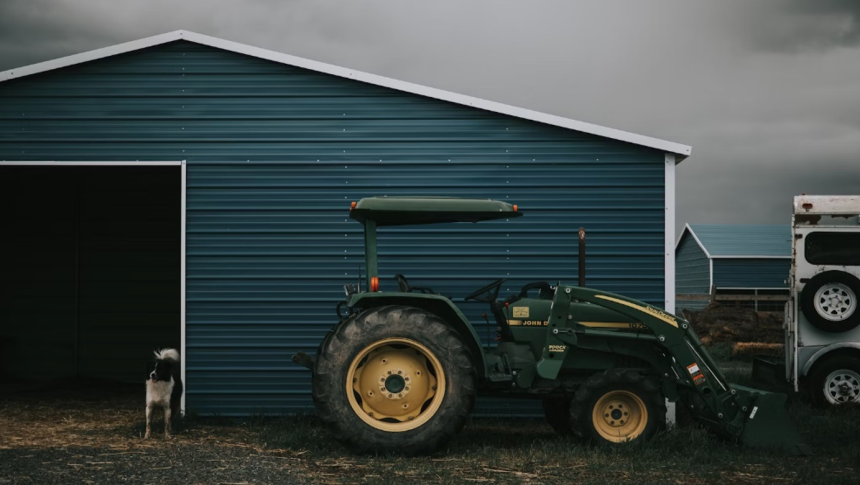Whether you’re running a small family-owned farm or a budding agricultural business, keeping all your equipment organised is key. As your farm grows, your regular garage may no longer be enough to provide you with the space needed.
For many Australian farmers, farm sheds are a necessary part of their day-to-day business. While these types of sheds are relatively simple structures, there are several pointers to keep in mind when you’re deciding on which will be the best space for your needs.
Farm Sheds are a Key Aspect of a Successful Farm
You may be thinking of building a farm shed for the first time. Or, you may already have a shed structure that needs an upgrade as your farm business has grown. Either way, keep the following in mind during the process.
1. Determine the Uses of Your Sheds
Before you decide on the shed you want, you will need to know exactly what you want to do with the shed space. This is important because knowing what you want to put or do in there will determine the features and size that you need.
Remember to consider the future needs of the shed as well. Some of the common uses for farm sheds include the following:
- Machinery storage
- Hay storage
- Shearing sheds
- Workshops
- Fertiliser and pesticide storage
- Animal shelters
An efficient shed will also add value to your farm if you’re looking for instant ways to increase your property’s resale value. Keep this in mind when you’re doing the initial planning, as it will motivate you to pick the best possible solution.
2. Consider the Potential Size of the New Shed
The most significant point to keep in mind when you’re planning your shed is the size needed. An undersized shed may not provide you with the storage space you require in the long run. Opting for a small shed may mean that before long you will need to invest in another one or do a remodel to increase the smaller one’s size.
If you have the space available, it’s a good idea to build a larger shed than what you think you need right now. You’ll want your shed to be adaptable to your future needs.
A few of the top ways to optimise the size of your shed include the following:
- Opt for a shed with a higher roof to accommodate higher machinery.
- To store machinery, you will need to review the door clearance you need – it may be a good idea to create a larger door space to accommodate the door beam or roller door drum.
- With a larger shed space, you will be able to store everything from small tools to hay, machinery, vehicles and even animals if necessary.
3. Think of the Best Location for Your Shed
Believe it or not, it matters where exactly you place your shed. If you have a small property, you may not have a choice about where you can build your new structure. However, if space allows, keep these few pointers in mind:
- Farmers in areas with a lot of wind, rain and other weather elements should have their sheds erected in the safest and most easily accessible spots.
- Consider the safest and best directions for vehicles to get in or out of the shed. In some instances it may be a good idea to have more than one entry point, creating a drive-through solution. There must be enough space around the structure to allow this flow of traffic.
- You may also want to put your shed up next to an animal pen or barn as this will provide extra support for these structures during a storm.
4. Review the Best Material for the Shed
It’s important to choose a material that’s sturdy and durable. A steel structure is often the best choice here because these are more likely to handle the extreme weather or even forest and bushfires common to Australia.
It may also be a good idea to ask your contractor for steel that has been reinforced with hot-dip galvanising. Doing this will ensure that the shed has an additional barrier that prevents oxidation and corrosion. This is an ideal solution for sheds in areas of high rainfall and humidity. The stronger the material, the safer your equipment, animals and resources will be.
Final Thoughts
Adding one very large, or several smaller sheds is often a very effective way to extend storage space or increase functionality on your farm. It’s important to consider the future plans for your shed to ensure that you choose a design that will still serve its purpose when your farm or business grows.
Sheds are also the perfect way to keep your equipment, animals, and other resources safe from weather elements and possible intruders. Additionally, larger sheds can also be converted into workshops to extend your business. Farm sheds are always an excellent investment to add to your farm property!
Lynn Martelli is an editor at Readability. She received her MFA in Creative Writing from Antioch University and has worked as an editor for over 10 years. Lynn has edited a wide variety of books, including fiction, non-fiction, memoirs, and more. In her free time, Lynn enjoys reading, writing, and spending time with her family and friends.















